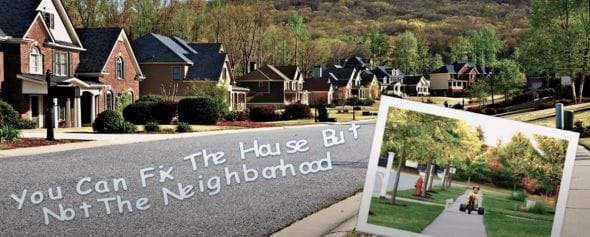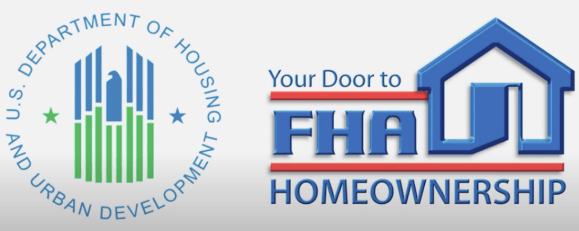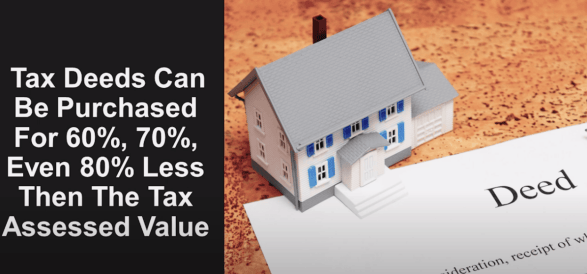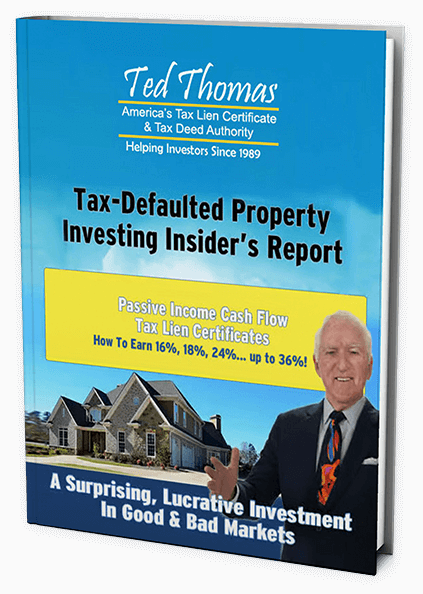Learn how to buy and flip real estate for a profit! Fixing and flipping properties is a popular way to make money in real estate, but it only works if you know what to do.
Everyone wants to make money and do so quickly. Unfortunately, in our society as a whole, people rarely think about long-term money-making. They sure think a lot about making money quickly. That’s always in the front of their mind.
Of course, the sellers of education materials on late night TV and programs in hotels take advantage of this. Young people think fast. They want the good life quickly.
Want to learn how you can make big profits from deep discount real estate? Would you like to buy homes for pennies on the dollar? Or earn double-digit interest rates? Learn how to secure your financial future with this FREE mini class today!
A FORMULA THAT WORKS
I’m not disparaging making money fast because I’ve shown thousands of people a formula. Let’s call it a process of buying property low and selling low and doing it quickly.
Today I’ll answer your question about how to buy and flip real estate for a profit.
I’m Ted Thomas, and for 30 years I’ve been involved in tax liens and tax deeds. I started as an investor then became a coach, mentor and guide. I’ve authored many books and created many distance-learning materials.

MAKING MONEY
There are dozens of ways to make money with real estate. Before I give you a few of the many ways to buy and flip real estate for a profit, I want to mention a strategy that’s the opposite of flipping property.
Certainly, there are many strategies, and they’re all different and exciting. You’ll have to decide which strategy you want or when to change your strategies.
LONG-TERM PROFIT
First let’s look at the difference between the quick flip for a profit and the long-term profit.
For this example, I’ll use insurance companies. They have a large investor base of clients that purchase policies and pay monthly. That means cash flow. The insurance companies accumulate their cash flow and build a portfolio for the long term.
Now, take a close look at a high rise building as it’s built in the middle of a major city in a redevelopment zone. It sometimes takes years just to build the foundation. However, insurance companies have cash flow, so they build for the long term.

Building in redevelopment areas has many advantages, like tax advantages from the state and the city.
When the building is completed they’re just getting started because the offices must be rented and management must be put in place. It may take an additional 5 years of investment to build out the inside of the building and put rental clients in place.
Many years pass, let’s say 10-20 years. As we move into the future, the money that was invested in the building is now also producing cash flow which they can distribute to the many policyholders or just enjoy the security the cash flow provides.
There’s nothing wrong with that long-term perspective.
I personally started with pre-foreclosure and bank foreclosure with the hopes of making cash flow relatively quickly. It wasn’t so quick, but I’m grateful for that business.
TAX LIENS AND TAX DEEDS
Fortunately, I discovered a better business in tax liens and tax deeds. Why was it better?
With tax deeds, I could purchase for 60%, 70%, even 80% less than the tax assessed or market value, compared with foreclosures with small margins of 25% and 30%.
One is the short term perspective, while the insurance company is the long-term perspective.
 FORECLOSURES
FORECLOSURES
This is a common method, as foreclosures are common. These are homes that may have been abandoned by the owners, people who have failed to pay the agreed upon promissory note, which is commonly called a mortgage from a bank or a lender.
The process of foreclosure on a loan simply means the bank or lender has not been paid, and they are now reclaiming via repossession the capital which is the property so they can mitigate their risk.
If the difference between the loan and the market value is adequate, those who call themselves flippers want to buy the deal.
PROPERTY FLIPPERS
 For example, an average home valued at $200,000 market value with a $100,000 mortgage that’s being repossessed certainly has margin for profit. Many investors and property flippers will bid at that auction.
For example, an average home valued at $200,000 market value with a $100,000 mortgage that’s being repossessed certainly has margin for profit. Many investors and property flippers will bid at that auction.
Flippers are a category of real estate investors who are interested in bargains from homeowners or brokers or banks or even private sellers. Their intent is to make a bargain purchase and sell as quickly as possible.
More than likely that sale will be to a bargain hunter or a fixer. Flippers are wholesalers, and they are taking advantage of bargain prices and desperate sellers and trying to make a quick buck.
The process is highly promoted on TV and with real estate groups.
WHAT ARE THE RISKS
The process works. However, the process also has risk which can be very high if the market is not trending up.
The key to success is your exit plan.
Maybe the flipper was bought at a bargain price, but since the purchase, the market has slowed down. The risk is, will the fixer be required to rehabilitate because the property didn’t sell quickly?
CASH FLOW
For many newcomers reselling property is a reality they never planned for. For flippers, it becomes a nightmare of getting enough cash flow out of the property to take care of family obligations.
However, that’s not the biggest problem.
The big problem is cash flow to hire and pay contractors who don’t always show up or repair using first class techniques.
Many flippers consider doing the work themselves. Maybe you’re going to tough it out and impress everyone with your diligence. Ask yourself this question, can you get the money back after you’ve done the fix up?
LOCATION

Nationwide, there will be many properties available. In most markets, buying is the easy part.
The price point is always the number one priority. The number two priority is always the location.
Location is just as important or more important than the price. “Buy locations” should be your mantra. Keep in mind you can fix the house but not the neighborhood.
PROFIT MARGIN
To sell, you must have significant margin between the purchase price and the selling price. I didn’t say this was a piece of cake. You must consider what happens if the market deflates 10% or 20%. Will you have margin?
Do you have margin to invest in fixer uppers? Do you have accounts with cash flow or other sources to take care of your family?
BUYING FLIPPERS
There are dozens of ways to buy flippers. It’s okay to start with real estate agents, newspapers, Craig’s List and dozens of online real estate sites.
The old standbys are the HUD (Department of Housing and Urban Development), the Department of Veterans Affairs, the Department of Agriculture and local For Sale signs. Many investors knock on doors. Foreclosure properties are listed at the county records.

There are multiple ways and ideas on how to buy and flip real estate for a profit. Selling is easy if you can be considerably below market and you offer installment sales.
I have a free gift for you, a 1-hour, streaming-video mini course that will teach you how to buy and flip real estate for a profit and create massive cash flow quickly.
If you’ve decided it’s time to charge of your financial future, then this Free Course is the best way to get yourself started on the road to success!
TAX DELINQUENT PROPERTY
For the last 30 years, I’ve been involved in tax liens and tax deeds. I’ll discuss what I found to be the advantage that allows purchasing at bargain prices which gives you an advantage when it comes to selling.
After many years of investing with different types of real estate involving foreclosure, discovering tax liens and tax deeds opened up a whole new world of profits and considerably less competition and risk.
The business is somewhat contrarian when compared to late night television and hotel seminars promoting flippers and quick turn dollars and wholesaling. Those businesses are all considered easy street. Maybe that is so.
Not for me! Everything I do seems to be work. I’m not complaining, and I don’t hate or avoid work as long as it’s honorable and ethical.
The answer to how to buy and flip real estate for a profit came to me late. However, I can prove it works with hundreds of successful clients, many who buy at tax defaulted auctions year after year for decades.

TAX DEFAULTED AUCTIONS
Tax liens and tax deeds are a simple business where you buy low and sell low.
Business is a lot simpler if you can buy at 60%, 70% or 80% discounts which is exactly what happens at tax lien and tax deed auctions. As a wholesale flipper, this from my perspective, is better than other markets.
Across the United States, there will be over 5,000 tax defaulted auctions each year.
A LITTLE-KNOWN INVESTMENT
 In my opinion, fully 75% of the real estate people, including the gurus and experts and long-term investors, aren’t even aware of what a tax defaulted auction really is, and they have no idea where to find tax auctions or the unique processes required.
In my opinion, fully 75% of the real estate people, including the gurus and experts and long-term investors, aren’t even aware of what a tax defaulted auction really is, and they have no idea where to find tax auctions or the unique processes required.
Most flippers are engaged with buying wholesale at foreclosure sales and buying from individuals. These sources don’t compare with tax liens and tax deeds.
TAX DEEDS VS FORECLOSURES
When you buy a bank property at auction, you are generally paying in total, the complete delinquent loan. That loan delinquency could be 40% of value, 50% of value, maybe even 80% of value.
If you pay 80% of value, you have very little room or margin to profit.
Tax defaulted real estate is sold at auction to the highest bidder, and it’s sold without a mortgage. It’s mortgage-free.
The auction normally begins at very close to the back-delinquent taxes.
It’s possible to buy real estate at a tax defaulted auction for 20 cents on the dollar, and the property will have no mortgage or trust deed loan.
In other words, you are purchasing properties at 60%, 70% or 80% discounts below the market value.
CONCLUSION

We hope you enjoyed Ted’s lesson, “How to Buy and Flip Real Estate for a Profit.”
When you’re flipping property, the key to success is your profit margin. The less profit margin you have, not only is your profit potential lower, but your risk is also higher. To truly succeed, you need all the margin you can get.
Conventional flipping tactics rarely leave you with a lot of profit margin since most flippers purchase bank foreclosure properties.
Foreclosures are sold starting at the amount of the defaulted mortgage or trust deed, which can be 80% or more. This lower profit margin makes it harder to sell the property at a profit or at a price that will move it quickly.
A far better, and little-known, option is tax defaulted property. Tax liens and tax deeds are sold at auctions with the starting bid around the amount of delinquent property taxes, and they’re sold without a mortgage.
When you take into account that property taxes are generally about 1% or 2% of the property’s assessed value, you don’t have to be a mathematician to see that you could pick up properties at a tax sale for pennies on the dollar.
With this large profit margin, you could buy low and sell low quickly for fast cash flow or sell on an installment plan for a regular income stream. That’s how to buy and flip real estate for a profit quickly and with the least amount of risk.
If you’d like to know more about how to get the best bargains in real estate, there’s no one more qualified to teach you than Ted Thomas, America’s leading authority on tax lien certificates and tax defaulted property investing.
Ted Thomas is the only one who provides full support and complete training with home study courses, Q&A webinars, live tutorials, workshops & web classes, and personal one-on-one coaching.
 Get started today at no cost with Ted’s FREE Master Class, that reveals the incredible opportunities available in tax defaulted real estate. The class is only about 1 hour of streaming video and contains life-changing information! You can’t afford to miss it!
Get started today at no cost with Ted’s FREE Master Class, that reveals the incredible opportunities available in tax defaulted real estate. The class is only about 1 hour of streaming video and contains life-changing information! You can’t afford to miss it!

 FORECLOSURES
FORECLOSURES


